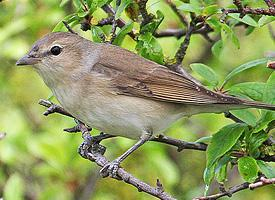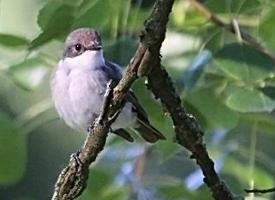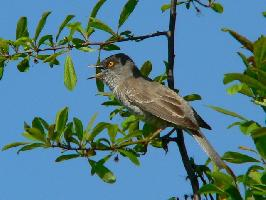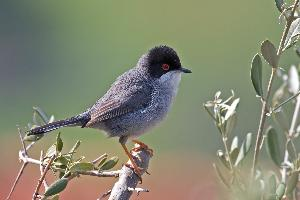
Súlyok és méretek
| Hossz | 13,5-tól 14,5-ig cm |
|---|---|
| Súly | 16-tól 22-ig g |
| Szárnyfesztávolság | 20-tól 24-ig cm |
Állatleírás
The Garden Warbler (Sylvia borin) is a small, inconspicuous bird that graces various habitats across Europe and parts of Africa with its presence. A member of the Sylviidae family, this bird is renowned not just for its melodious song but also for its elusive nature, often making it heard more than seen. This bird exhibits remarkable migratory patterns, breeding in temperate regions across Europe and western Asia, then wintering in the tropical realms of sub-Saharan Africa.Physically, the Garden Warbler is a study in subtlety. It measures about 14 cm in length and weighs around 15 to 25 grams, with a wingspan that stretches to about 20-23 cm. The bird presents a rather plain appearance; both sexes display similar plumage, characterized by a nondescript brownish or greyish upper body, with slightly paler underparts. The lack of distinctive markings such as eye stripes or wing bars, which are common in many other bird species, makes it challenging to identify. However, its rich and fluty song, a mix of melodious phrases often intermixed with harsher notes, is a distinctive feature that sets it apart during the breeding season.
Garden Warblers have a varied diet that changes with the seasons. During the breeding season, they primarily feed on insects and other invertebrates, gleaning them from leaves and branches in dense foliage. This diet is crucial not only for their survival but also for the growth and development of their young. As the seasons turn and they prepare for their migratory journey or upon their arrival in their wintering grounds, their diet shifts towards fruits and berries, providing them with the necessary energy for their long flights.
Breeding typically begins in late April or May, depending on the climate of their breeding grounds. The Garden Warbler is a solitary nester, with the female constructing a well-hidden nest in dense shrubs or low in trees. The nest, made from grasses, leaves, and stems, lined with finer materials, will host a clutch of 4-6 eggs. These eggs, which are incubated primarily by the female, hatch after about two weeks, ushering in a busy period of feeding and care by both parents until the fledglings are ready to leave the nest.
The Garden Warbler's migratory journey is a testament to its resilience. As summer wanes in their breeding territories, they embark on a daunting journey to their wintering grounds in Africa. This migration occurs mainly at night, helping them avoid predators and conserve energy. Upon arrival, they spend their time in a variety of habitats, from woodland to bushland and gardens, showcasing their adaptability.
Despite their widespread range, Garden Warblers face challenges from habitat loss and degradation, both in their breeding and wintering grounds. Climate change also poses a significant threat, potentially disrupting their migratory patterns and the availability of food sources. Conservation efforts are thus crucial to ensure that the soothing melodies of the Garden Warbler continue to herald the arrival of spring in Europe and its presence in Africa.
In summary, the Garden Warbler is a small, elusive bird with a melodious song, engaging in remarkable migratory journeys across continents. Its adaptability to various habitats and diets underscores the intricate web of ecological relationships sustaining our natural world, making it a fascinating subject of study for ornithologists and bird enthusiasts alike.
Hasonló állatok
Új állatfotók
Top 10 állat
- Dolphin gull (Leucophaeus scoresbii)
- Diana monkey (Cercopithecus diana)
- Moustached guenon (Cercopithecus cephus)
- Galápagos tortoise (Geochelone nigra complex)
- Japanese macaque (Macaca fuscata)
- Stone loach (Barbatula barbatula)
- Russian tortoise (Testudo horsfieldii)
- Greek tortoise (Testudo graeca)
- Common flying dragon (Draco volans)
- Vendace (Coregonus albula)


